Cadillac's Celestiq is poised to recapture the standard of the world
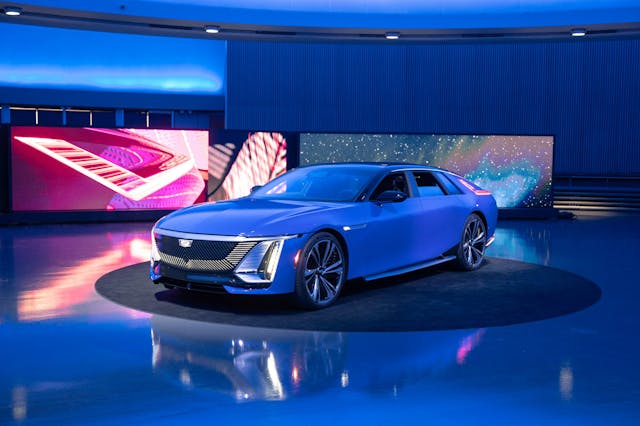
Steven Pham
Like countless other companies, automotive and not, Cadillac wants an electric vehicle to make its greatness known. Fresh from a visit to GM’s Design Dome in Warren, Michigan, we can vouch for one thing: This EV ain’t like the others.
For starters, it’s $300,000. At minimum. If you’re upset by that figure, you aren’t the target audience. The Celestiq is a made-in-Detroit statement of ten-figure money. Regular folks can’t even visualize their dreams on an online configurator, in part because there is no set list of paints, leathers, fabrics, or finishes: Each car will be bespoke, the result of one-on-one interaction between the automaker and the customer. Plenty of manufacturers above Cadillac’s price point offer online visualizers—see Pagani—and also accommodate the most particular of client wishes, so take Caddy’s statement of exclusivity at face value. Not for you.
Boy, will you want one.
The car is imposing, a low-slung four-door whose graceful, lift-back proportions belie its massive size. Take a gander at the wheel diameter: 23 inches, one inch larger than those on the Escalade SUV. Yet the Celestiq sits comfortably on the giant rims, which are shod in custom, Cadillac-commissioned Michelins, their sidewalls embossed with a Celestiq-specific design.

Steven Pham

Steven Pham

Steven Pham
The fluid surfacing and the precise creases in the car’s body subtlety signal the great expense of its construction. From the beltline down, front to rear, the car’s structure is comprised of eight pieces of sand-cast aluminum, whose rigidity mimics that of die-cast metal. The hood is a single sheet of delicately creased carbon fiber draped over the fenders to the headlights. The doors hide a short-range radar system that allowed designers to dismiss handles entirely: Walk up to the vehicle with the key in your pocket, and the door will either swing fully open or “present” an edge to you, depending on the proximity of pillars, walls, and other cars.
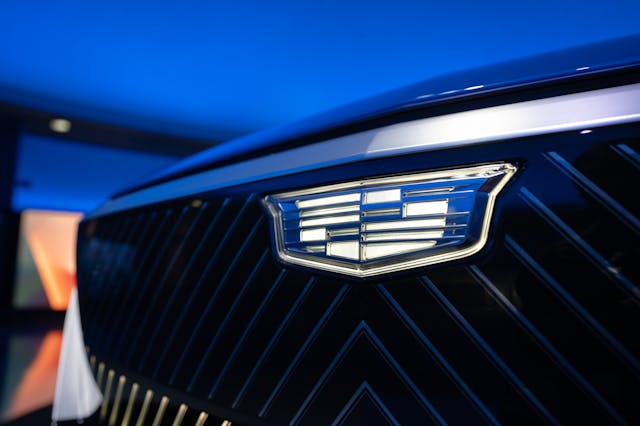
Steven Pham
Even the brightwork bits are wildly impractical statements of excess. The metal “eyebrow” spanning the front of the car starts as a sheet of billet aluminum as wide as the car itself and almost a foot deep: The whole piece is brushed to a satin finish, then the front edge polished to a contrasting, higher sheen. The brushed metal that forms the rocker panel trim is an exposed piece of warm-formed aluminum that belongs to the car’s inner assembly. Traditionally, this would have been stamped, requiring it to be broken into four individual sections. Cadillac’s designers and engineers said no.

Steven Pham
The roof, each quadrant individually dimmable, is a single sheet of acoustically insulated glass. For it, Cadillac visited Peru, the site of the only foundry big enough to cast it in one piece. The Celestiq’s “grille” may not need to route air to a combustion engine, but Cadillac refused to spare expense: The blades that frame the headlights are stamped from aluminum, brushed, then accented with delicate polished texturing. The silver lines in the center section expose indium, the softest non-alkali metal chosen for its transparency to radar.

Steven Pham
Peer inside—Cadillac isn’t yet allowing anyone to sit in this, its one and only prototype—and the show continues. The cabin is dominated by the car’s nearly flat waistline, a single contour that runs across the dash, continues through the doors, and sweeps behind the two rear chairs (there is no bulkhead) to meet the bottom of the liftgate’s glass. Designers and engineers suffered endless headaches to create it: “When we redid that speaker grille at the base of the A-pillar, we literally chased it all the way to the trunk,” says Tristan Murphy, Cadillac’s lead interior designer. Curved interior contours are useful in workaday cars because they disguise imperfections of line, but in the Celestiq’s linear cabin, there is no place to hide. Says the Celestiq’s lead engineer, Tony Roma: “The door pads have adjustability up, down, in, out in a way that I would get shot if I proposed doing it anywhere else. But we’re doing it here.”
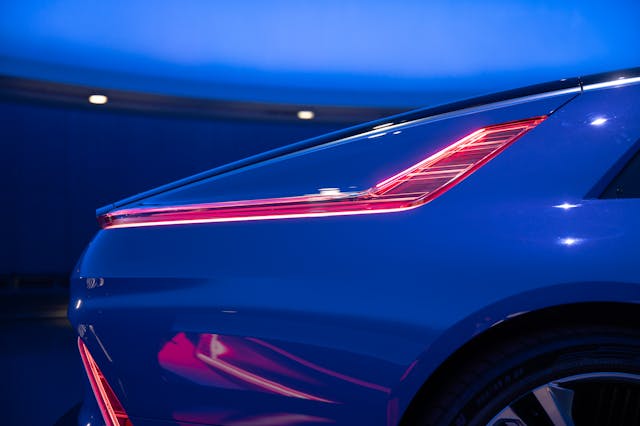
Steven Pham
Those speaker grilles are, the team reflects, the largest Cadillac has ever made. Stamped out of aluminum, their holes are acid-etched before the whole panel is anodized, creating a dark finish that a laser precisely removes to create a 3-D effect. That curved glass panel on the dash fits two screens behind a single sheet of carefully bent glass measuring over four and a half feet, corner to diagonal corner. The floors are upholstered in leather, the cupholders in suede.
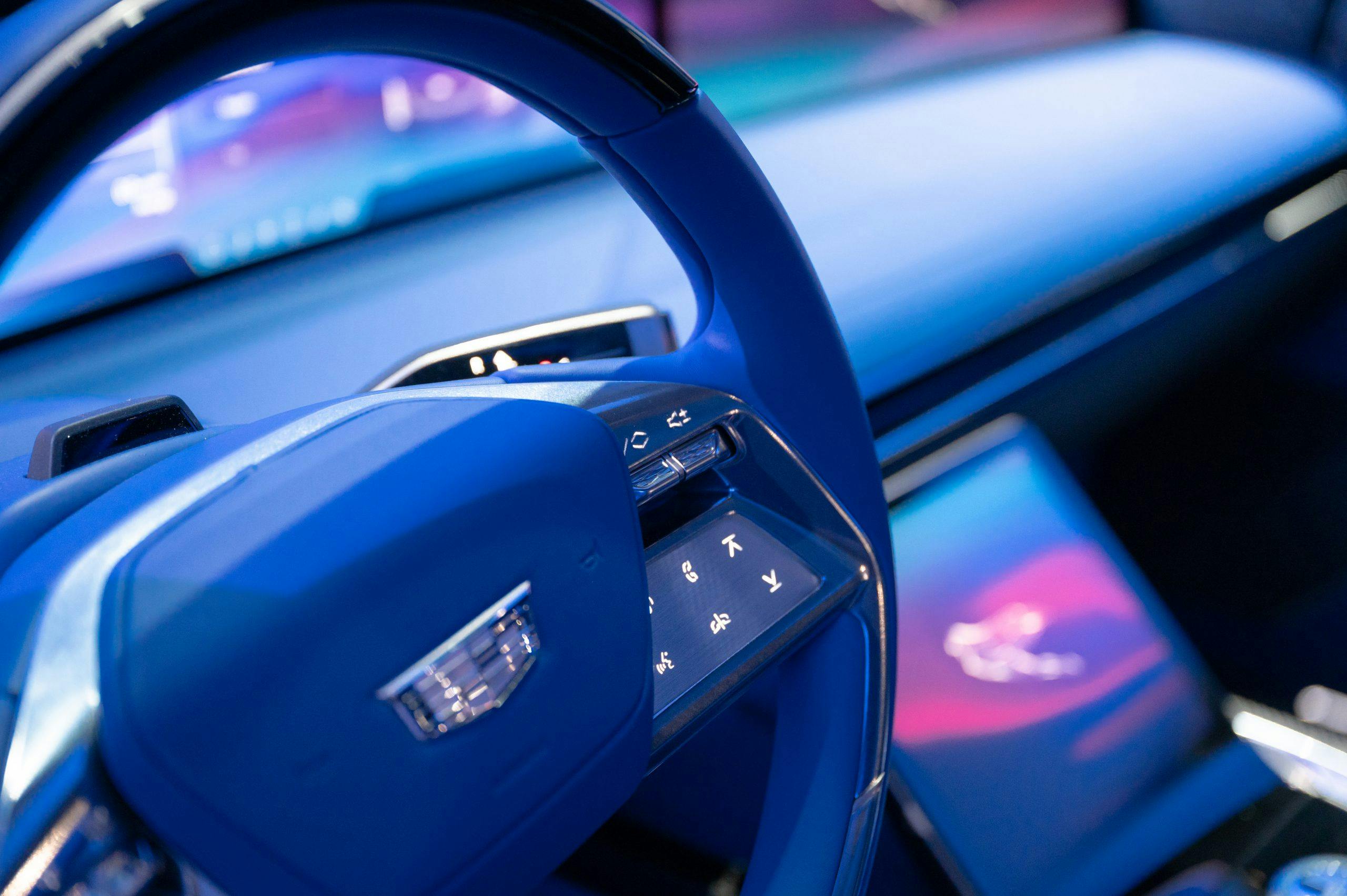
Steven Pham
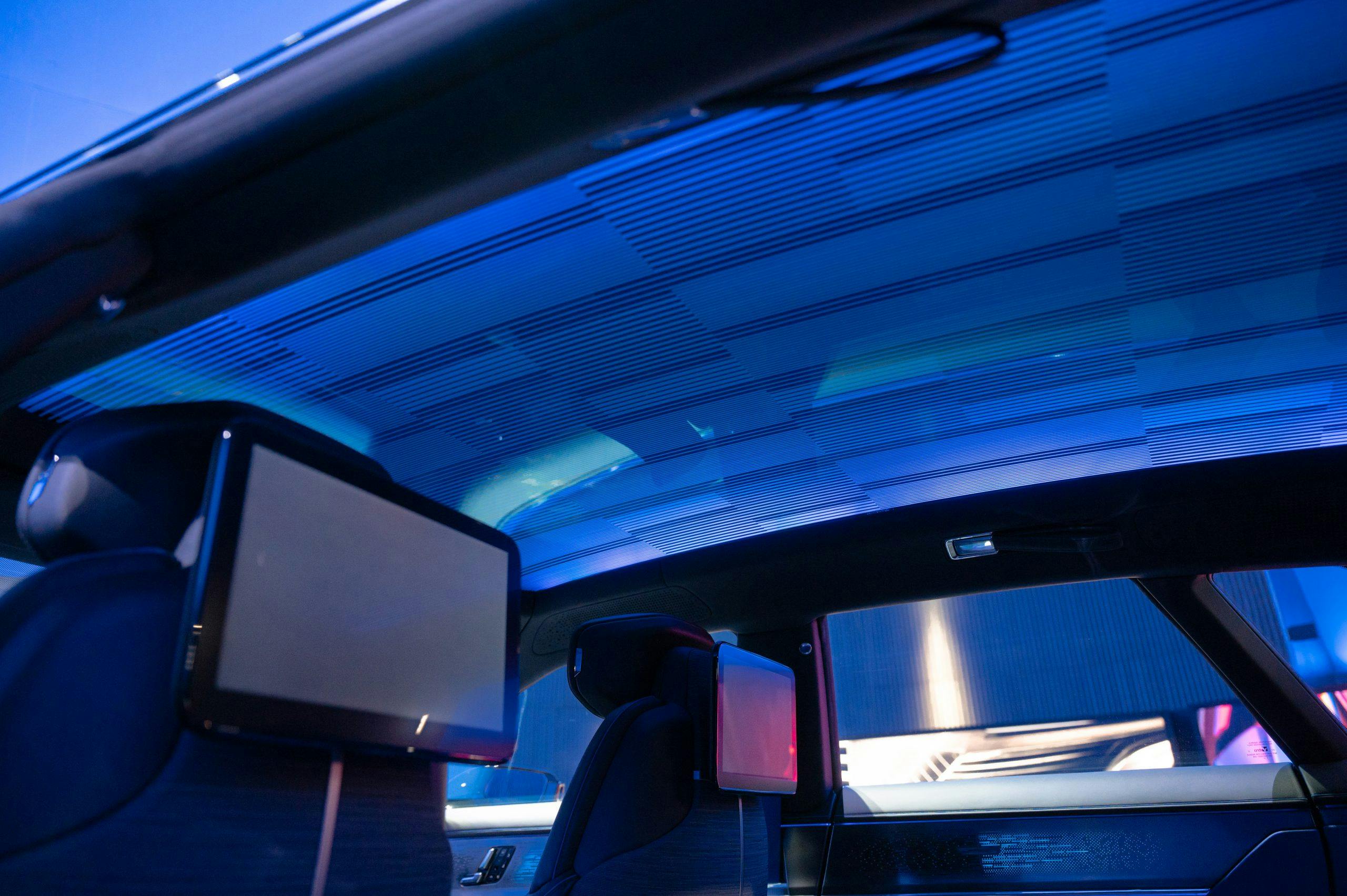
Steven Pham
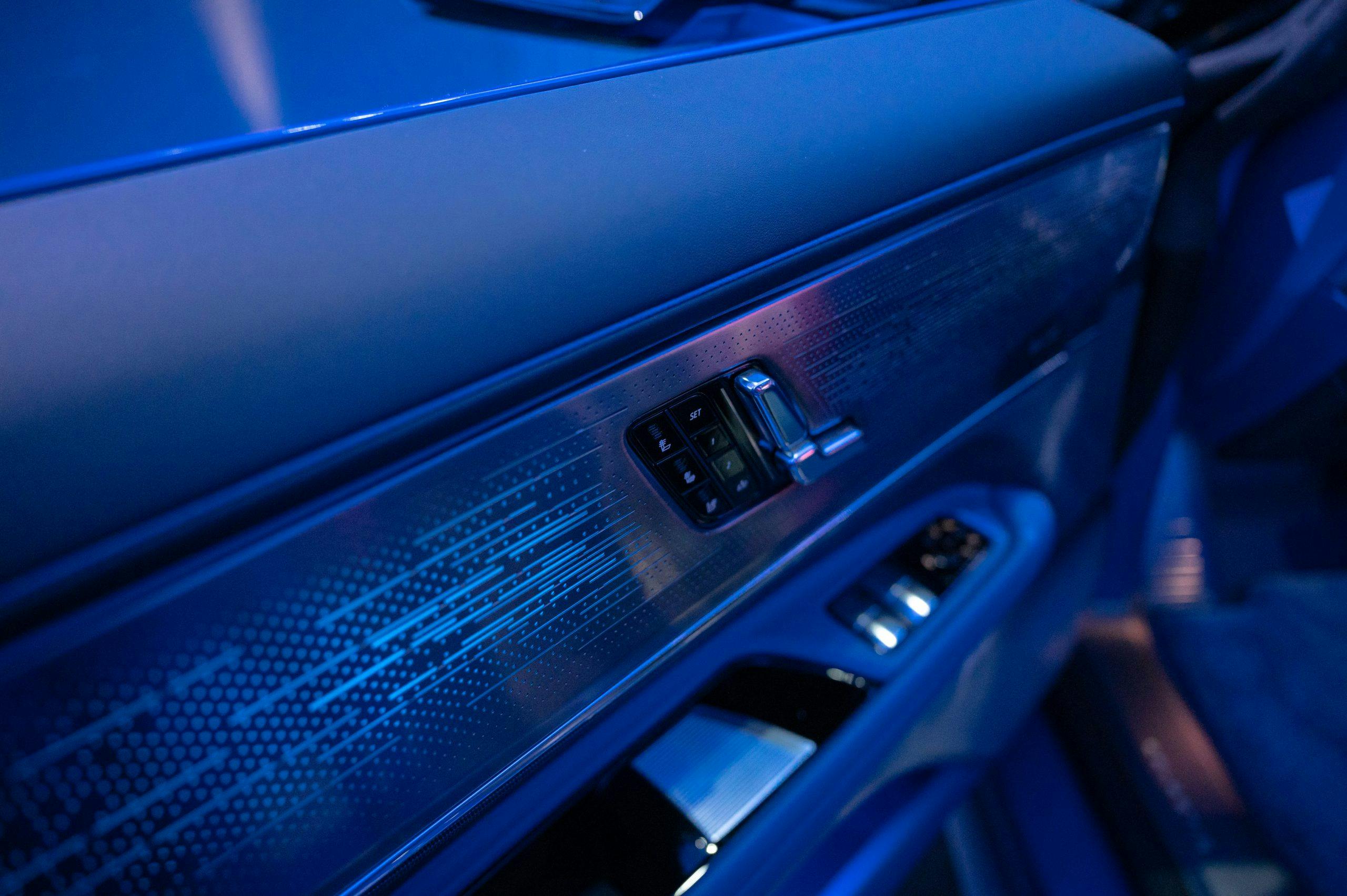
Steven Pham

Steven Pham
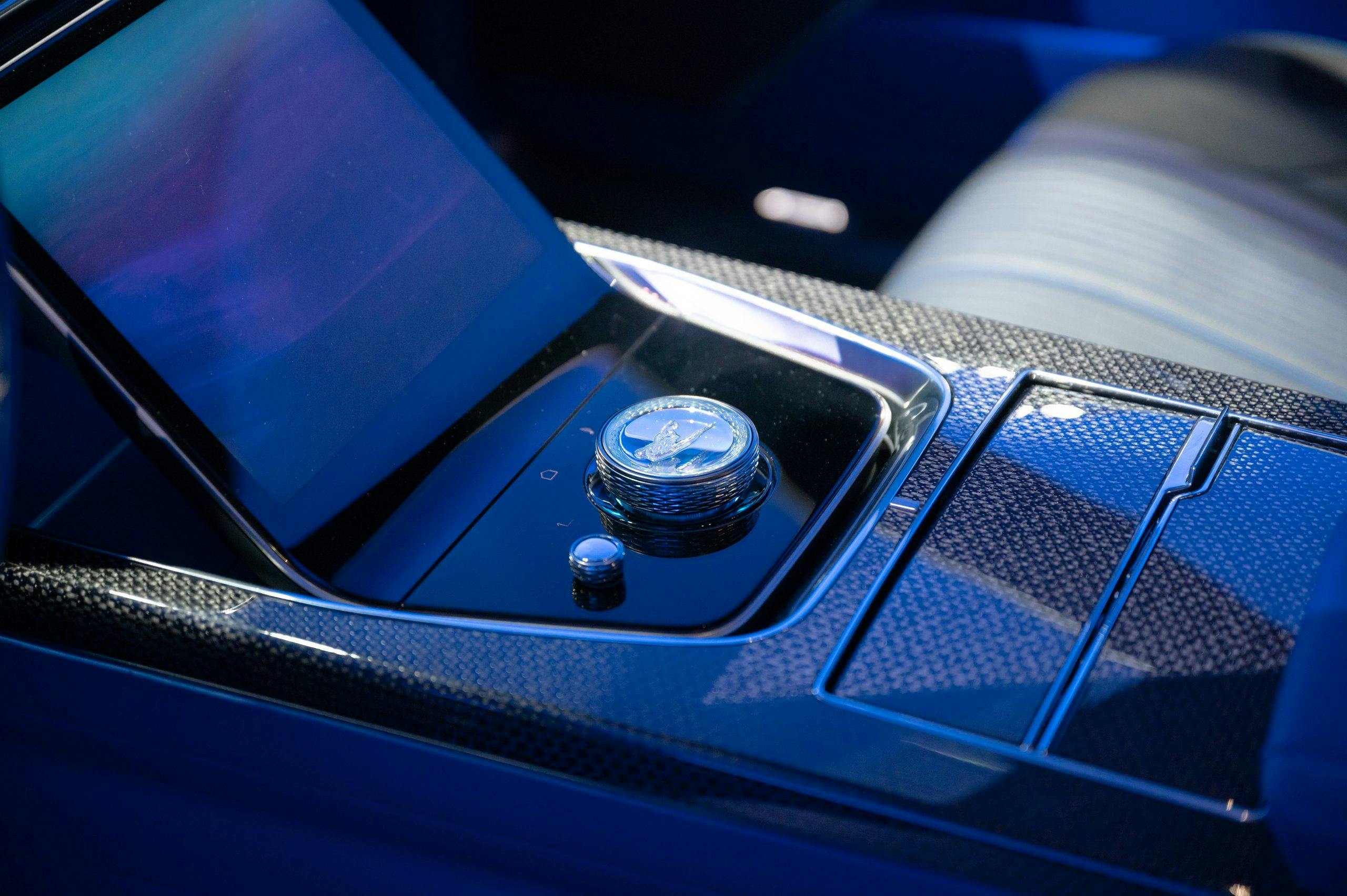
Steven Pham
Lucid’s triple-motor, 1200-hp Sapphire boasts twice the horsepower of this dual-motor Cadillac, but if you’re comparing the two, you’re already on the wrong foot. Think of Bentley, and its “adequate” power: No one driving or being chauffeured in a Celestiq wants anyone to mistake them for a Tesla-esque blur. The Celestiq’s job isn’t to be the first high-tech EV, or even the most customizable Cadillac: It is to be Cadillac’s Veyron, a superlative, new-world interpretation of old-school prestige.
For nearly 80 years, Cadillac has again and again fallen prey to its own lofty condemnation, failing to equal or to excel. With the Celestiq, Detroit once again risks the penalty of leadership. For that alone, Cadillac deserves to live.
SOURCE: HAGERTY